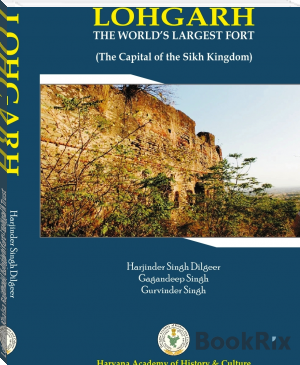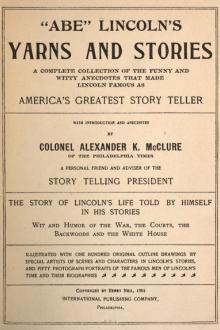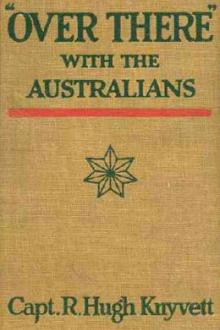Lohgarh - Khalsa Rajdhani, Lohgarh fort - Lohgarh Trust, S. Daljeet Singh Bajwa [early reader books .txt] 📗

- Author: S. Daljeet Singh Bajwa
Book online «Lohgarh - Khalsa Rajdhani, Lohgarh fort - Lohgarh Trust, S. Daljeet Singh Bajwa [early reader books .txt] 📗». Author S. Daljeet Singh Bajwa
The next day he was offered release in case he could get Banda Singh arrested.71 The Emperor sent a message to his (minor ruler’s) mother asking her to exchange her son by presenting Banda Singh. At this Bhup Parkash’s mother arrested 35 Sikhs and dispatched them to the Emperor. The Emperor ordered the killing of these Sikhs but refused to release Bhup Parkash till Banda was arrested.
Khafi Khan reports that on the 13th of March 1711, the Emperor puts Bhup Parkash and Gulab Singh Bakhshi (a companion of Banda Singh arrested from Lohgarh) in a big iron cage and dispatched them to Delhi. On the 20th Of March 1711 the Emperor ordered that both of them should be interned in Qila Salimgarh (a Fort on the backside of the Lal Qila, especially reserved for prominent prisoners) and a receipt (of the arrival of the prisoners) given by the incharge of the Fort, be also presented before him the (Emperor). (Later, the mother of the ruler of Nahan approached the Rajput rulers of Jaipur and Jodhpur and requested them to use their influence for the release of Bhup Parkash, but they told her that they could not do anything and he would be released only when Banda Singh was arrested).
On 17 March 1711, the Emperor sent command to Mahabat Khan
to put Bhup Parkash in the thorny cage that had been made for Banda Singh. Mahabat Khan submitted before the Emperor that Bhup Parkash was innocent and Banda Singh had already sneaked out of the territory of Nahan. At this the Emperor said ‘if you do not punish him, all the hill rulers will become Sikhs. You must punish him’. Mahabat Khan again pleaded that the nails inside are sharp and hard and Bhup Parkash would die as soon as he put into the cage. Even this could not change the callous mind of the Emperor and he said ‘in case the Raja dies, he will surely go to hell’. After this Mahabat Khan did not plead any more, and, in compliance of the Emperor’s command, he put Bhup Pakash into the cage, but before that he asked his servants to bend the nails, so that they might not inflict wounds to Bhup Parkash.72
Pancholi Jagjiwan Das gives a different story. According to him, when Bhup Parkash and his Diwan (minister) reached there (before the Emperor), Khan Khanan asked them, “where is Banda Singh”? At this the minister said Banda Singh had gone out of their State. Reacting to this Khan Khanan said that was telling lies and he insulted him. He (Diwan) was handcuffed, his feet were fettered and an iron belt was put around his neck and he was put into a cage. Raja Bhup Parkash too was unarmed and he was interned in a small tent; and, soldiers were posted to keep a watch on him. Pancholi Jagjiwan Das further says that Raja Chhatarsaal too had assured Raja Bhup Parkash that he will not be harmed. But, when Chhatarsaal saw that the Emperor has impressed Bhup Parkash, he left the camp of the Emperor and returned to his own country.73
According to Diwan Bhikhari Das when Raja Nahan reached there Khan Khanan asked him where is Banda Singh, the Raja said ‘I don’t know. My Diwan (minister) is a Sikh of the Guru, he might have knowledge of the Banda Singh’s whereabouts’. At this the minister was arrested and badly beaten. His survival was in danger. The next day, the Emperor said, ‘You will find nothing by beating the minister; instead arrest Raja of Nahan and tell him that if he does not present Banda Singh, his State will be destroyed.’74
On 22 January 1711, when the Emperor was near Sadhaura, a
messenger brought the news that Raja of Nahan’s mother had captured Banda Singh and she was on her way to present him to the Emperor. She was about 12 kos (about 45 kilometers) from the royal camp. At this the Emperor commanded that Mahabat Khan should go and bring them to his presence. The Emperor sent a message to Mahbat Khan to put Banda Singh in the cage and his wive should be brought in a chariot. On 24 Janaury, the Emperor ordered that Hindu style ornaments worth rupees one hundred thousand should be made for the mother of Raja Nahan (as an award for arresting Banda Singh).75 Though, later, the news of the arrest of Banda Singh proved to be false.
Endnotes
Entry of Akhbarar-i-Darbar-i-Mu’alla, also Tazkira-i-Salatin Palanquin was a symbol of privilege and Akhbarat-i-Darbar-i-Mu’alla, entry of 2.1710. Akhbarat-i-Darbar-i-Mu’alla, entry of 4.1710. Akhbarat-i-Darbar-i-Mu’alla, entry of 5.1710. Akhbarat-i-Darbar-i-Mu’alla, entry of 5.1710. Akhbarat-i-Darbar-i-Mu’alla, entry of 5.1710. Akhbarat-i-Darbar-i-Mu’alla, entry of 5.1710. Akhbarat-i-Darbar-i-Mu’alla, entry of 5.1710. Akhbarat-i-Darbar-i-Mu’alla, entry of 5.1710. Akhbarat-i-Darbar-i-Mu’alla, entry of 5.1710. Akhbarat-i-Darbar-i-Mu’alla, entry of 5.1710 Akhbarat-i-Darbar-i-Mu’alla, entry of 6.1710. In Muntkhab-ul-Lubab. Akhbarat-i-Darbar-i-Mu’alla, entry of 6.1710. Akhbarat-i-Darbar-i-Mu’alla, entry of 7.1710. Akhbarat-i-Darbar-i-Mu’alla, entry of 7.1710 Akhbarat-i-Darbar-i-Mu’alla, entry of 7.1710 Akhbarat-i-Darbar-i-Mu’alla, entry of 7.1710. Akhbarat-i-Darbar-i-Mu’alla, entry of 7.1710. Akhbarat-i-Darbar-i-Mu’alla, entry of 8.1710. Ibid.
Akhbarat-i-Darbar-i-Mu’alla, entry of 8.1710 Akhbarat-i-Darbar-i-Mu’alla, entry of 8.1710 Akhbarat-i-Darbar-i-Mu’alla, entry of 8.1710 Akhbarat-i-Darbar-i-Mu’alla, entry of 9.1710. Akhbarat-i-Darbar-i-Mu’alla, entry of 10.1710 Akhbarat-i-Darbar-i-Mu’alla, entry of 10.1710 Khafi Khan, Muntakhab-ul-Lubab, II, p. 658. Now, not even a single brick of this Fort-like inn can be found Akhbarat-i-Darbar-i-Mu’alla, entry of 101710. Ibid., Page Khafi Khan, cit., pp 669-70, Kamvar Khan, op.cit., p. 352. Also Akhbarat- i-Darbar-i-Mu’alla, entry of 20.10.1710. Ganda Singh, Banda Singh Bahadur, p Muzaffar Alam; The Crisis of empire in Mughal North India, 169 Amarjit Singh (editor), Revisiting Banda Singh Bahadur and his times, Key Note by S. Grewal, p. XXXVI. Akhbarat-i-Darbar-i-Mu’alla, entry of 11.1710. Kamwar Khan, Tazkira Salatin Chgatta, 103 of translation by Ali Nadeem Rizvi. Pancholi Jagjiwan Das’s letter to the ruler of Jaipur, dated 26 December 1710, Serial No 1, Arzdaashat No 9 (quoted in Rajasthani Documents on Banda Singh Bahadur, edited by Dr. Balwant Singh Dhillon). In Tazkira Salatin Chugatta Muhammed Qasim Aurangabadi, Ahwaal-ul-Khawakeen, (edited by Balwant Singh Dhillon), pp 34-37. Muzaffar Alam The Crisis of empire in Mughal North India, p Balwant Singh Dhillon, Rajasthani Documents on Banda Singh Bahadur, Vakil Rep 2, dated Jan. 19, 1711. Khafi-Khan, quoted by Elliot and Dowson, History of India as told by its own Historians, VII. p.454. Akhbarat-i-Darbar-i-Mu’alla, entry of 28-10-1711. Akhbarat-i-Darbar-i-Mu’alla, entry of 15-10-1710 Chhatarsal was in direct line of Raja Rudar Partap Rudar Partap’s grandson had murdered Abu Fazal, a minister of Akbar. Chhatarsal was the son of Champat Rai, fifth in direct line of Rudar Partap. In 1671, Chhatarsal, as a boy, was the chief of a small unit of just 25 horsemen. He worked hard and became a prominent fighter. Later, on the 21st of January 1714, Farrukhsiyar granted him a mansab of six thousand zaat and four
thousand horsemen, a very high status for a non-Muslim. At the time of his death, he was the master of half of eastern Bundelkh and.
Khafi Khan, cit, Vol II, pp 671-72. Muhammed Qasim Aurangabadi, Ahwal-ul-Khawakeen, pp 40-43. The two warriors who fought so bravely that they are quoted as the greatest fighters of the history/mythology. Elliot & Dowson, cit, vol 7, p 423. Khafi Khan, cit. Vol. II, pp. 669-670. Tazkira Salatin Chugatta, p. 153. Irvine, Later Mughals, vol II, 111, Khafi Khan. Op. cit, Vol I, p 671. Khafi Khan, cit, Vol II, p 669-70, Elliot & Dowson, History of India as told by its Historians, Vol 7, p. 423-24, Tazkira Salatin Chugatta, p 153. Elliot & Dowson, cit. Vol 7, p. 555-56. Khan Khanan took Bahadur Shah’s castigation to his heart and became despondent. This made him mentally sick and he was confined to He, however, continued to move along with the Emperor’s caravan. After about two month’s illness, he died at village Badhauli (near Sadhaura). Khan Khanan had a mansab of seven thousand horsemen, out of which five thousand was double horses, the highest mansab at that time. He had, by then, obtained awards of about ten million rupees from the royal court. Muhammed Qasim Aurangabadi, Ahwaal-ul-Khawakeen, pp 34-37 (edited by Balwant Singh Dhillon). Elliot & Dowson, cit., Vol VII, p 424. Muhammed Qasim Aurangabadi,Ahwaal-ul-Khawakeen, pp 34-37 (edited by Balwant Singh Dhillon). Rajasthani Documents on Banda Singh Bahadur (edited by Balwant Singh Dhillon), Vakil Report No. 351, dated 6 March 1711. Khafi Khan, cit., p 672-73. Akhbarat-i-Darbar-i-Mu’alla, entry of 12.1710. Akhbarat-i-Darbar-i-Mu’alla, entry of 12.1710 This Churamani Jatt, earlier, had been a companion of Tara Azam (the brother of Bahadur Shah). But, after his defeat and death at the hands of Bahadur Shah, he plundered Tara Azam’s treasure and joined the camp of the Akhbarat-i-Darbar-i-Mu’alla, entry of 6 December In some papers the date has been mentioned as 30 November 1710
The difference is due to usage of Julian and Gregorian calenders.
Akhbarat-i-Darbar-i-Mu’alla, entry of 26 March 1711 Jurra, kitash and jadwar are all birds of Akhbarat-i-Darbar-i-Mu’alla, entry of 12.1710 Muhammed Qasim Aurangabadi, Ahwaal-ul-Khawakeen, p 37 (edited by Balwant Singh Dhillon). Letter written by Bhikhari Das to the ruler of Jaipur, on 17 March Serial No 13, Vakil Report No 45. (Rajasthani Documents on Banda Singh Bahadur, edited by Dr Balwant Singh Dhillon). Letter written by Pancholi Jagjiwan Das to the ruler of Jaipur, dated 26 December 1711, Serial No 1, Arzdaasht No (Rajasthani Documents on Banda Singh Bahadur, edited by Dr Balwant Singh Dhillon). Letter of Diwan Bhikhari Das to the ruler of Jaipur, dated 10 Janury 1711, Serial No 2, Vakil Report No (Rajasthani Documents on Banda Singh Bahadur, edited by Dr Balwant Singh Dhillon). Letter of Diwan Bhikhari Das to the ruler of Jaipur, dated 27 January 1711, Serial No 3, Vakil Report No (Rajasthani Documents on Banda Singh Bahadur, edited by Dr Balwant Singh Dhillon), also Akhbarat-i-Darbar-i- Mualla, entry of 22 Janury 1711.
Chapter 7
The Emperor Leads Campaign
Against the Sikhs
On the 1st January 1711, Mohammed Amin Khan reached Sadhaura and told the Emperor that he had brought four cartloads of the heads of the (slain) Sikhs. He also made a complaint against Shamas Khan of Sultanpur Lodhi (he was angry with Shamas Khan because the latter had earned the credit of occupying Sarhind).1
One day, Bahadur Shah came to know about the Banda Singh’s presence at Chamba. He decided to dispatch a unit of his army to confirm the news, and, attack Chamba if necessary. On the 9th of February 1711, Bahadur Shah presented a robe of honor to Hamid Khan and appointed him general of a five thousand strong army to chase Banda Singh. On 6th of March, Mahabat Khan (Bakhshi-ul-Mulk) too was sent to chase the Sikh army; he was given command of fourteen thousand soldiers.2 Bahadur Shah had sent several thousand soldiers against the Sikhs
but he, still, was not satisfied. Hence, on March 14, he proclaimed that he would stay in Lahore, from where he himself would monitor the actions against the Sikhs. He sent messages to all the government, reporters and officials to daily report to him about the movements of the Sikhs. Those who sent regular reports included: Oma Pandit, Askar Rao, Abdul Rehman, Abdul Rahim, Altaf Khan, Iradatmand Khan, Shankar Rao, Kesho Rao, Jagjiwan Das, Dianat Rao, Partit Rao and Bhagwati Das etc (all these names are found in the entries of Akhbarat-i-Darbar-i- Mulla). All these were the official reporters who had, regularly, have been sending reports from Lahore, Sarhind, Gujrat, Delhi, Jammu, Ajmer and other places.3 The Emperor used to give presents to those who would give him some valuable information or the news of the death or
losses of the Sikhs. These reports helped the Emperor to take action and/or make necessary changes in his strategy.
On 20 March 1711, the Emperor presented robes of honor to Hindu feudal Churhamani Jatt and Kishan Singh Naroka, and attached them to Mahabat Khan in an expedition against the Sikhs. On 22 March the Emperor left Sadhaura for Lahore. On 24 March the Emperor was told that Banda Singh has occupied territory between Guru-Da-Chakk (Amritsar) and Shahdara, the outskirts of Lahore (on





Comments (0)